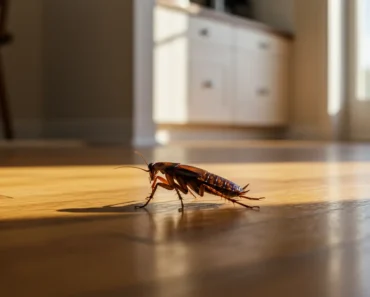25 Companion Planting Combinations for a Thriving Garden. This guide explores the synergistic power of planting combinations, revealing how strategic pairings can naturally enhance growth, deter pests, and invite beneficial insects for a vibrant and productive garden.
The Science and Art of Companion Planting Combinations
Gardening is a constant dance with nature. Experienced gardeners often observe how certain plants seem to thrive when grown near specific neighbors, while others struggle. This observation forms the basis of companion planting. It is an age-old practice, deeply rooted in traditional agriculture, and now increasingly adopted by modern gardeners seeking sustainable and organic solutions. It moves beyond simply placing plants together. It involves understanding beneficial interactions.
Companion planting means strategically placing different plant species close to each other to gain mutual benefits. These benefits include natural pest deterrence, attraction of beneficial insects (like pollinators and predators), improved soil health, enhanced growth, and sometimes even better flavor in vegetables. The concept recognizes that plants, like people, can be good or bad neighbors. A well-chosen planting combination creates a mini-ecosystem where plants support each other, reducing the need for chemical interventions.
Understanding the principles behind effective Planting Combinations transforms a garden from a collection of individual plants into a harmonious, interdependent community. It is a powerful organic gardening technique that harnesses nature’s own wisdom. It leads to healthier, more resilient, and ultimately more productive gardens. This approach adds depth and strategy to your gardening endeavors.
Key Principles of Successful Planting Combinations
Effective Planting Combinations rely on understanding various plant interactions. These principles guide gardeners in choosing allies that enhance growth and mitigate common garden problems.
Pest Deterrence: Natural Defenses
Many companion planting combinations work by deterring common garden pests. Certain plants release compounds from their roots or foliage that repel insects. For example, marigolds are known to repel nematodes. Onions deter aphids. These plants act as natural guardians, protecting their vulnerable neighbors without the need for chemical sprays. This reduces pest damage.
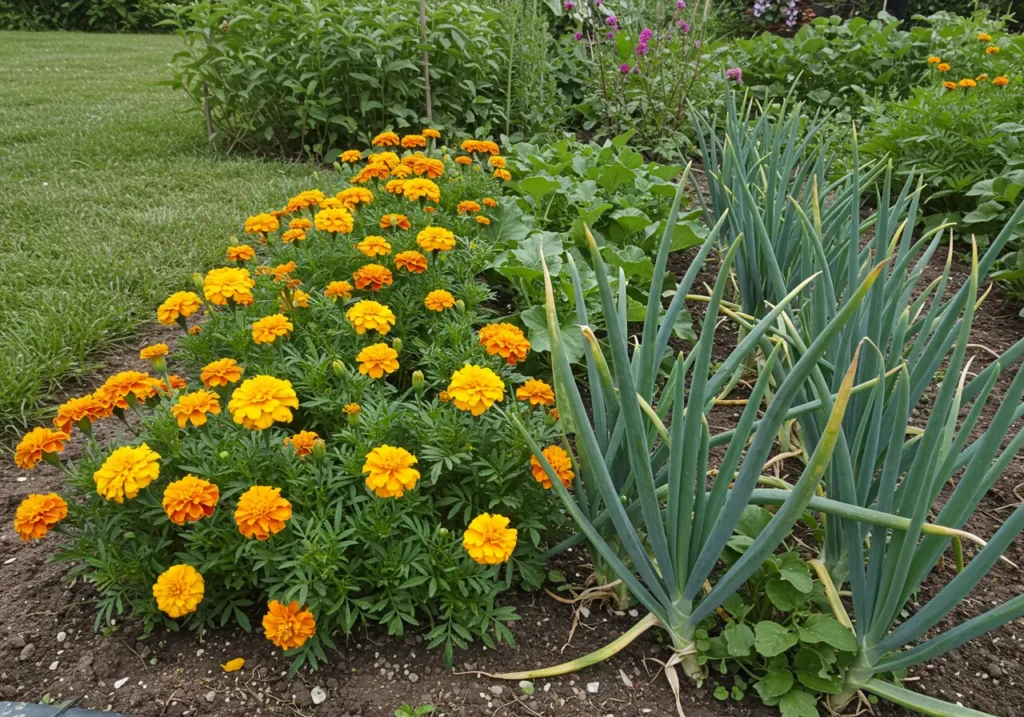
Some plants also act as “trap crops,” attracting pests away from more valuable crops. This diverts pest attention, concentrating them in one area for easier management. This proactive defense is a cornerstone of companion planting.
Attracting Beneficial Insects: Garden Allies
Successful Planting Combinations also focus on inviting beneficial insects into your garden. These include pollinators (bees, butterflies) that increase crop yields, and predators (ladybugs, lacewings) that feed on harmful pests. Flowers with open, accessible blooms, like dill, cilantro, or sweet alyssum, provide nectar and pollen for these helpful insects.
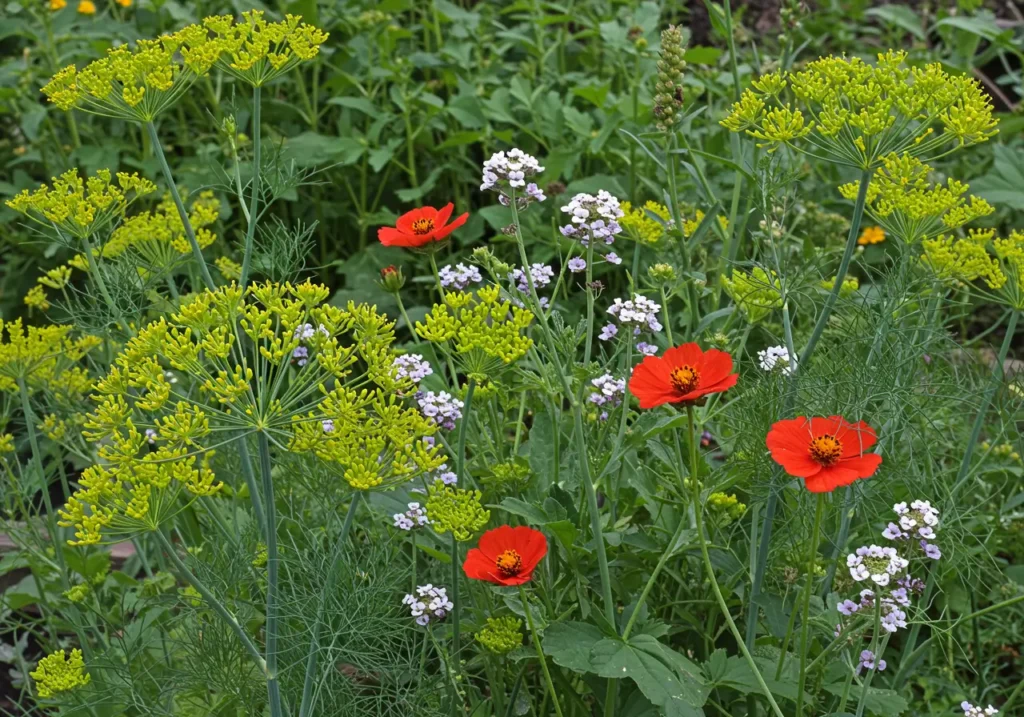
By creating a hospitable environment for beneficial insects, you establish a natural pest control system. This reduces pest populations organically. It enhances pollination for better harvests.
Soil Improvement and Nutrient Cycling: Feeding the Earth
Some companion plants contribute directly to soil health. Legumes (beans, peas) fix nitrogen from the air into the soil, enriching it naturally. Deep-rooted plants break up compacted soil, improving aeration and drainage. Certain plants, when used as cover crops or mulches, suppress weeds and add organic matter when they decompose.
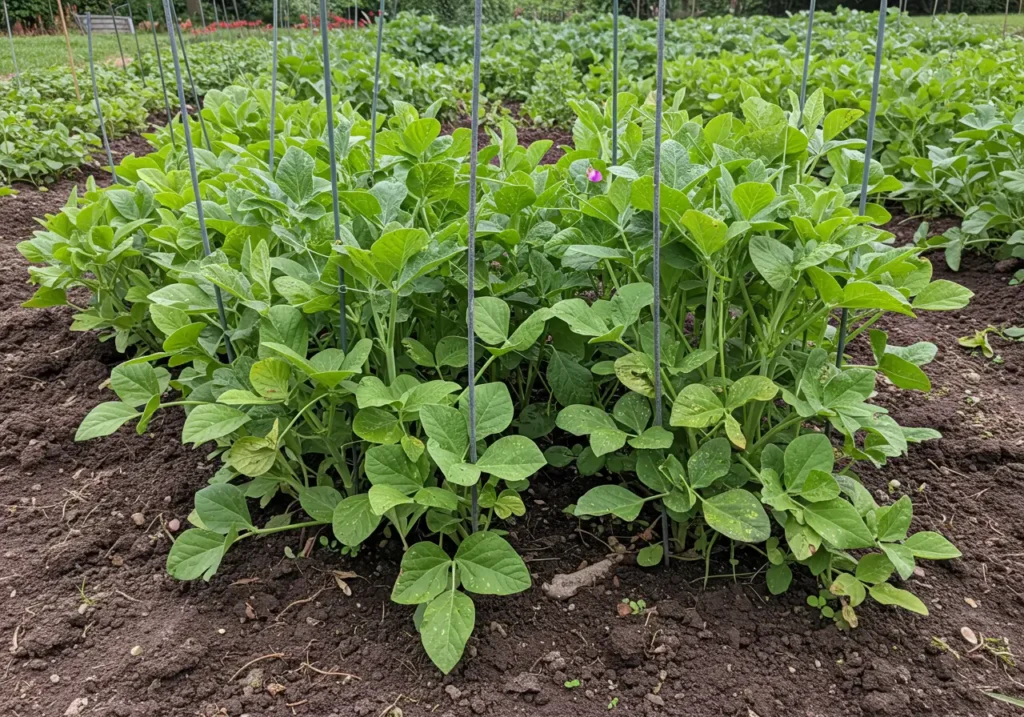
These interactions enhance the growing environment for neighboring plants. They create a healthier soil ecosystem. This reduces the need for external fertilizers and amendments.
Growth Enhancement and Flavor Improvement
While less understood scientifically, many gardeners report that certain Planting Combinations enhance the growth or even improve the flavor of their companion plants. This might be due to beneficial root exudates, improved nutrient uptake, or subtle microclimate effects. For example, basil is said to improve the flavor of tomatoes. Potatoes and beans are thought to benefit each other’s growth.
These synergistic effects contribute to a more productive and flavorful harvest. They add another layer of benefit to companion planting strategies.
25 Companion Planting Combinations for a Thriving Garden
These specific Planting Combinations leverage natural synergies to enhance growth, deter pests, and attract beneficial insects. Incorporating them into your garden plan can lead to a healthier and more productive harvest.
1. Tomatoes and Basil: Flavor and Pest Repellent

Tomatoes and basil are a classic pairing. Basil is said to improve the flavor of tomatoes. It also helps repel tomato hornworms and flies. This combination enhances both taste and pest protection.
2. Corn, Beans, and Squash (The Three Sisters): Ancient Wisdom
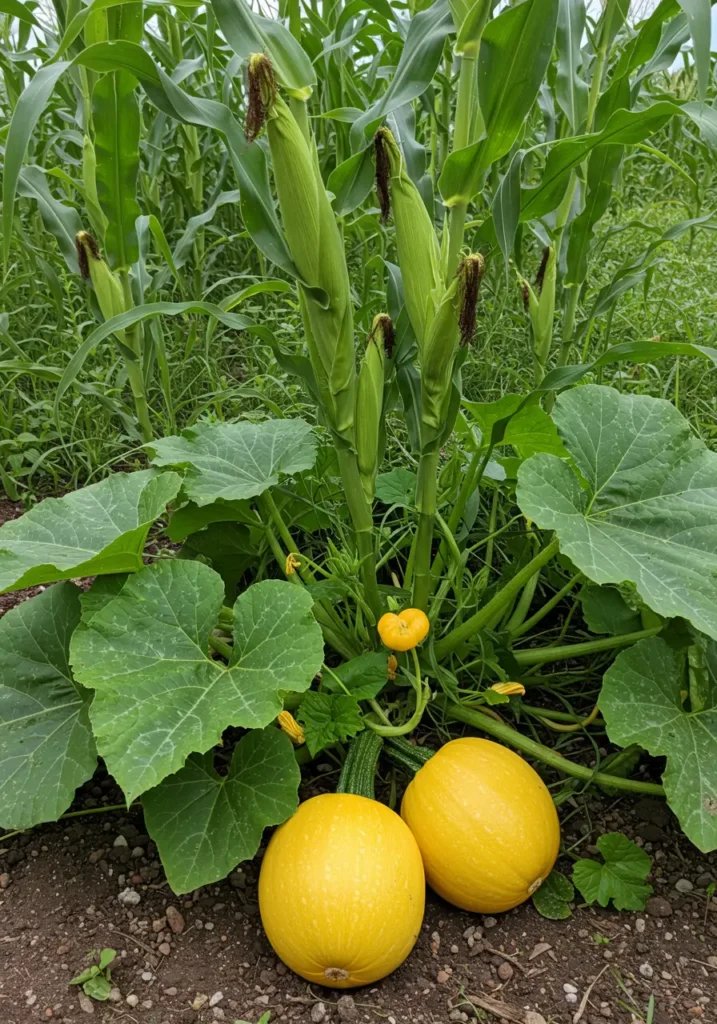
This traditional Native American planting combination is a powerhouse. Corn provides a stalk for beans to climb. Beans fix nitrogen into the soil, benefiting both corn and squash. Squash vines provide ground cover, suppressing weeds and retaining moisture. The prickly leaves of squash also deter pests.
3. Carrots and Rosemary: Root Protection
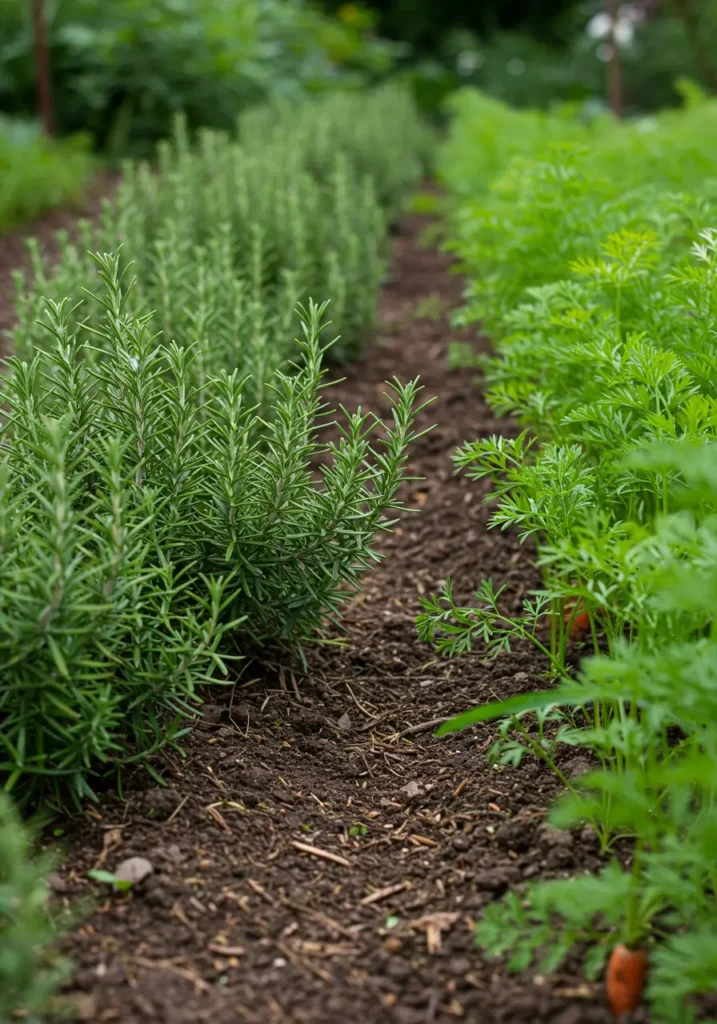
Plant rosemary near carrots. Rosemary helps deter the carrot rust fly, a common pest that damages carrot roots. This aromatic herb provides a natural barrier.
4. Cabbage and Dill: Attracting Beneficials
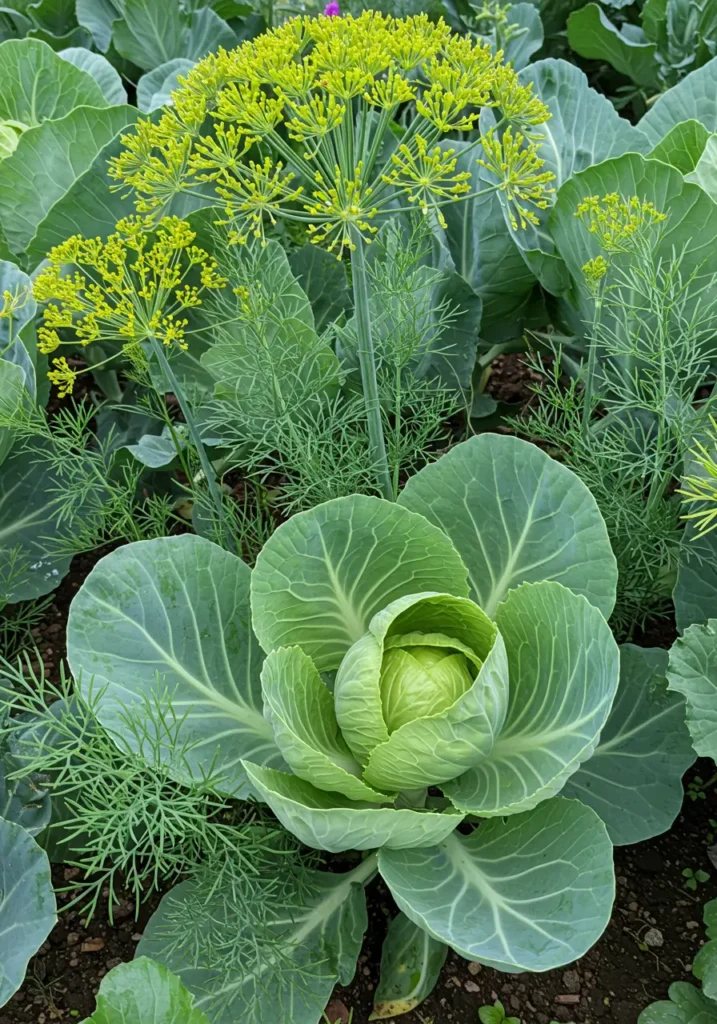
Dill attracts beneficial insects like ladybugs and predatory wasps, which feed on common cabbage pests such as cabbage worms and aphids. Dill also improves cabbage growth and flavor.
5. Lettuce and Mint: Pest Management and Flavor

Planting mint near lettuce helps repel slugs and other chewing insects. Be cautious, as mint is aggressive; plant it in containers placed near lettuce to prevent it from taking over. This combination offers natural pest control.
6. Roses and Chives: Fungal Defense and Aphid Control

Plant chives near roses. Chives help deter aphids, a common rose pest. They are also believed to increase the rose’s resistance to black spot, a common fungal disease. This pairing offers a dual benefit.
7. Peppers and Marigolds: Nematode Control

Plant marigolds (especially French marigolds) around pepper plants. Marigolds release compounds from their roots that repel nematodes, microscopic worms that damage plant roots. This helps protect pepper plants from unseen threats.
8. Cucumbers and Nasturtiums: Trap Cropping Pests
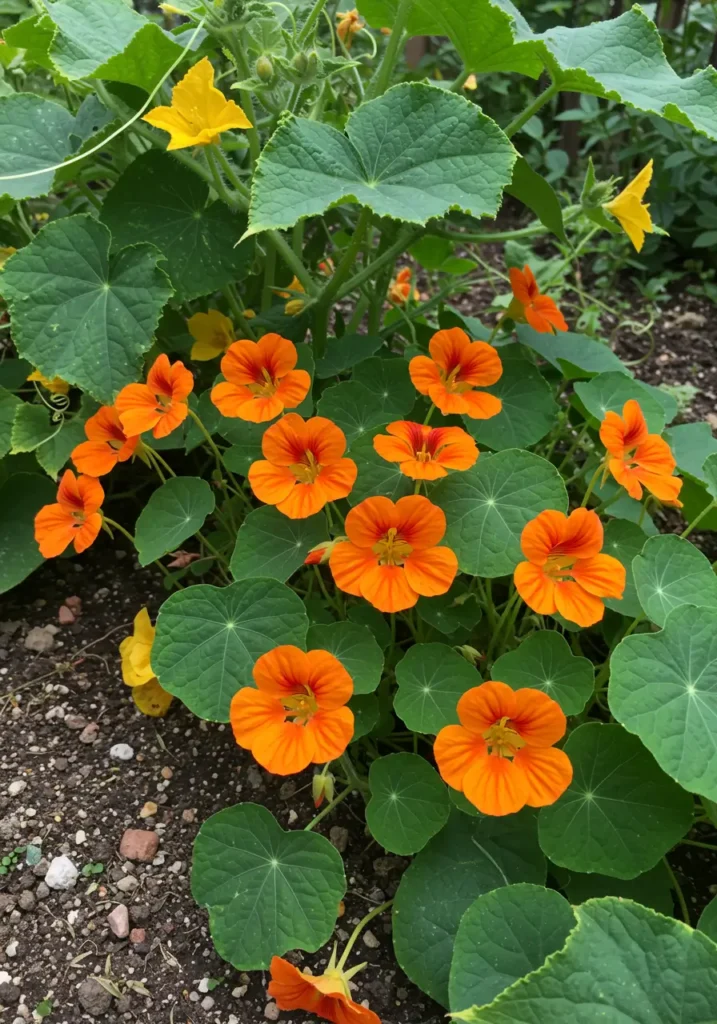
Nasturtiums act as a trap crop for aphids. Plant them near cucumbers. Aphids prefer nasturtiums, drawing them away from your valuable cucumber plants. This allows you to easily remove pests from the nasturtiums.
9. Potatoes and Beans: Mutual Growth Enhancement
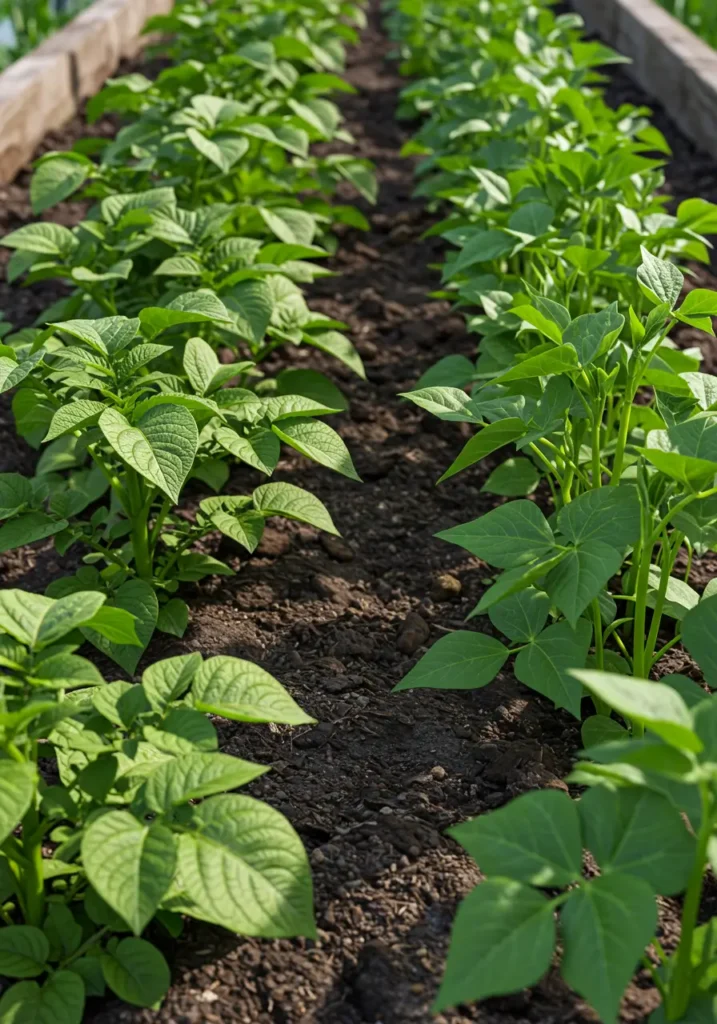
Beans provide nitrogen to the soil, which benefits potatoes. Potatoes are thought to deter Mexican bean beetles, a common bean pest. This combination offers mutual growth enhancement and pest control.
10. Broccoli and Chamomile: Health Boost

Plant chamomile near broccoli. Chamomile is believed to improve the growth and flavor of nearby plants. It also attracts beneficial insects, providing a natural health boost for your broccoli plants.
11. Strawberries and Borage: Attracting Pollinators and Deterring Pests
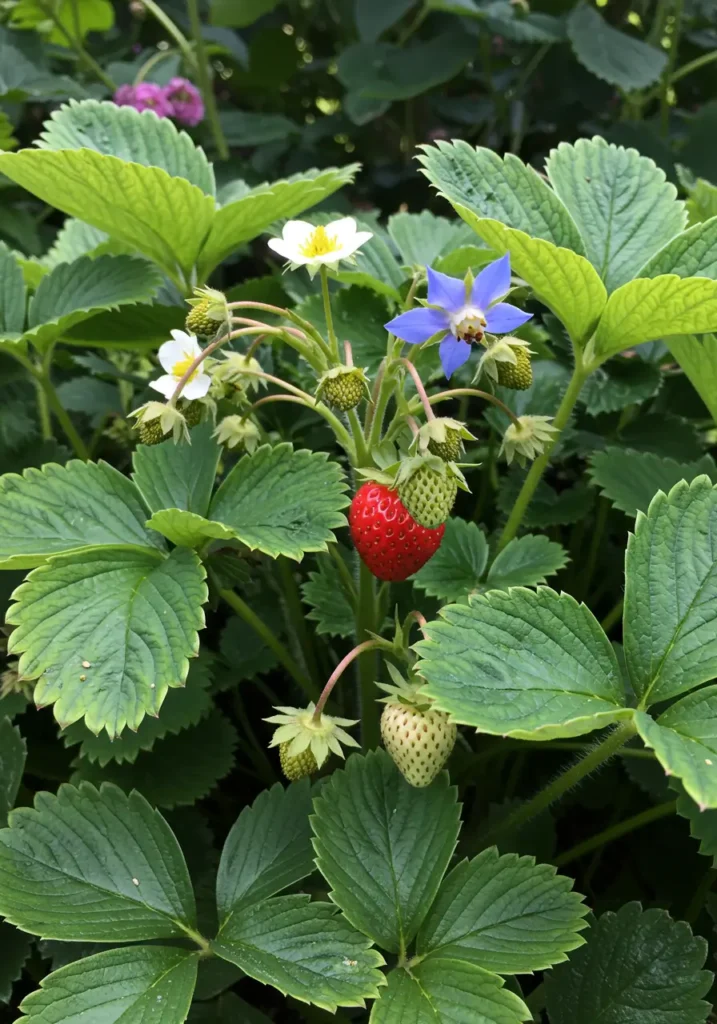
Borage attracts pollinators like bees, which are essential for good strawberry yields. It also helps deter tomato hornworms and cabbage worms, even though these are not direct strawberry pests, benefiting the garden ecosystem generally. This makes for more abundant and healthier harvests.
12. Onions/Garlic and Carrots: Root Maggot Repellent
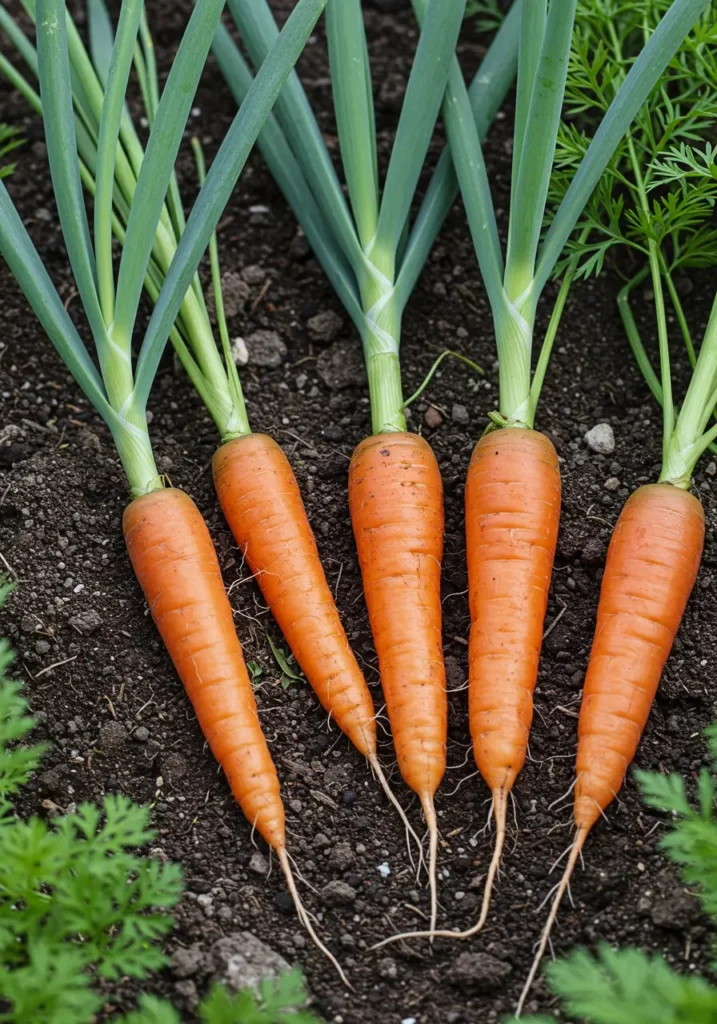
Plant onions or garlic near carrots. The strong scent of alliums repels carrot rust flies and other root maggots. This natural repellent protects root vegetables from underground pests, ensuring clean and healthy produce.
13. Corn and Pumpkins: Ground Cover and Support
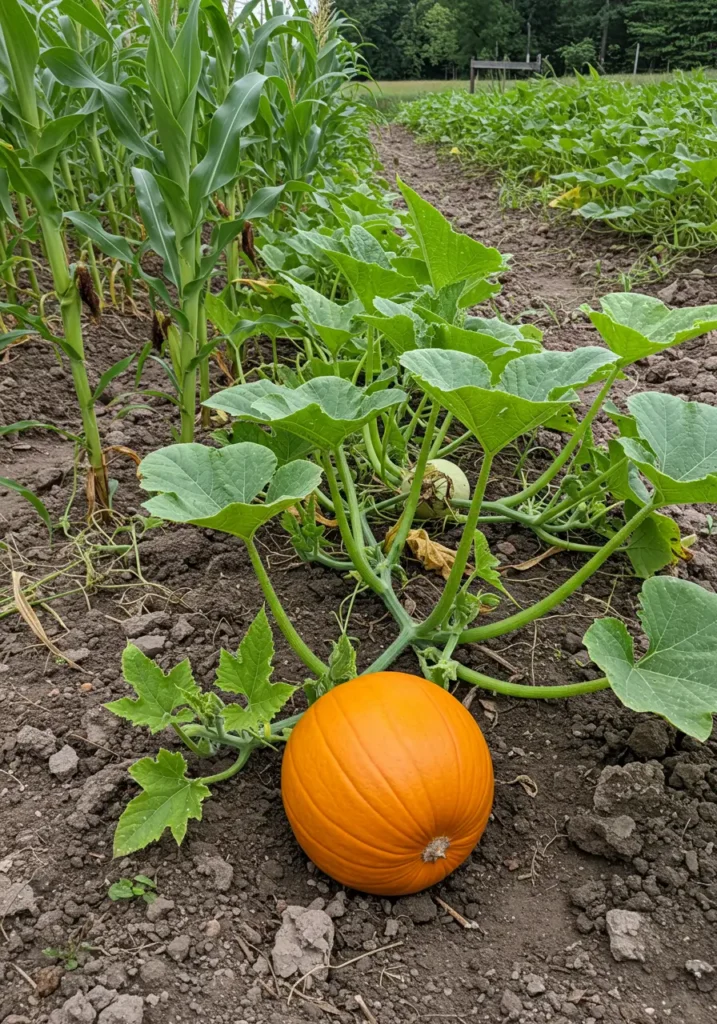
Similar to the Three Sisters, corn provides vertical support for pumpkin vines. Pumpkin vines spread along the ground, acting as a living mulch. They suppress weeds and keep the soil moist. The prickly vines also deter raccoons and other animals from raiding corn.
14. Squash and Borage: Attracting Pollinators and Enhancing Growth
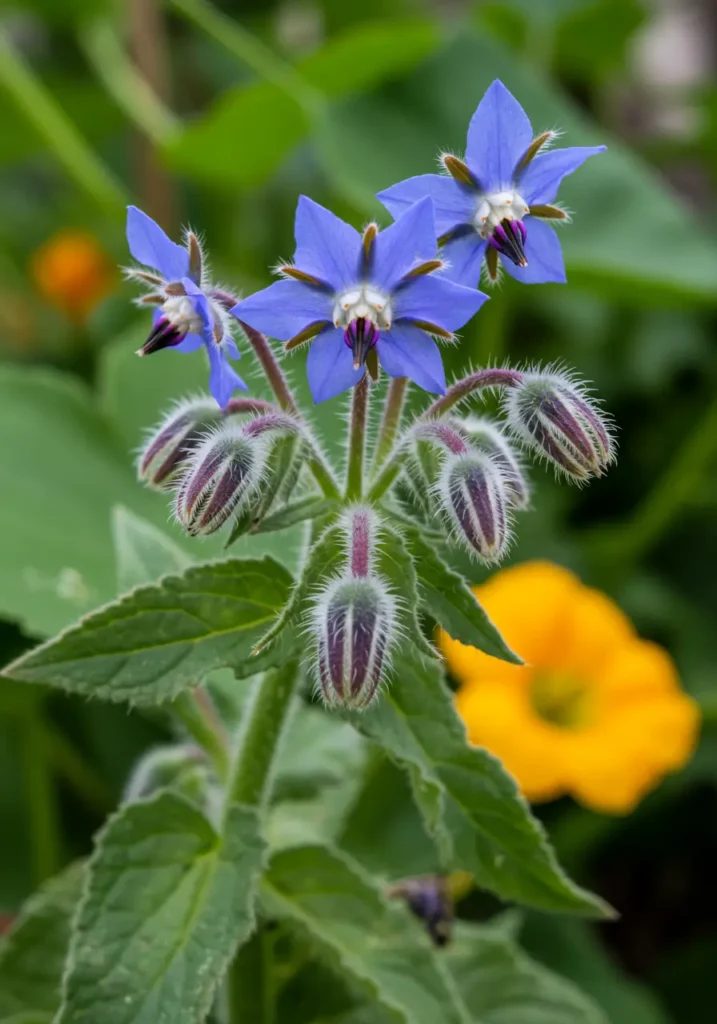
Borage is an excellent companion for squash. It attracts beneficial pollinators (bees) crucial for squash fruit set. It also helps deter squash vine borers and tomato hornworms. Borage is said to improve the overall health and growth of squash.
15. Asparagus and Tomatoes: Shared Benefits
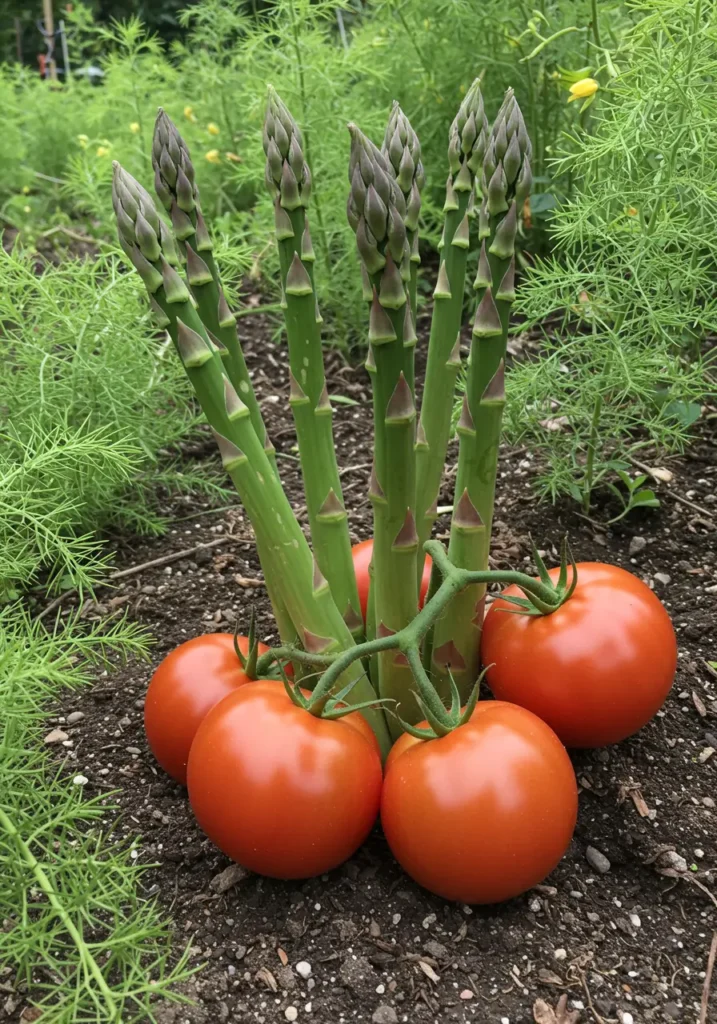
Tomatoes repel asparagus beetles, a common pest for asparagus. Asparagus is believed to deter nematodes that can harm tomato plants. This pairing offers a reciprocal benefit, improving the health of both vegetables.
16. Potatoes and Marigolds: Nematode and Beetle Control
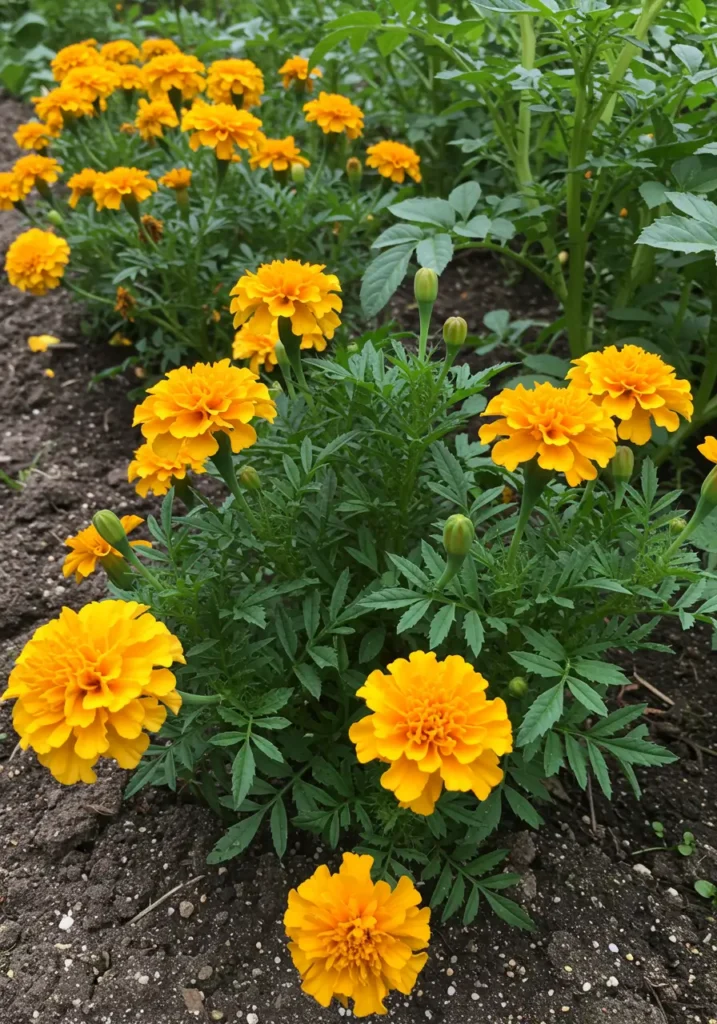
Marigolds (especially French marigolds) repel nematodes from potato roots. Marigolds can also act as a trap crop for potato beetles. This combination offers robust pest protection for your potato crop.
17. Spinach and Radishes: Fast-Growing Comrades
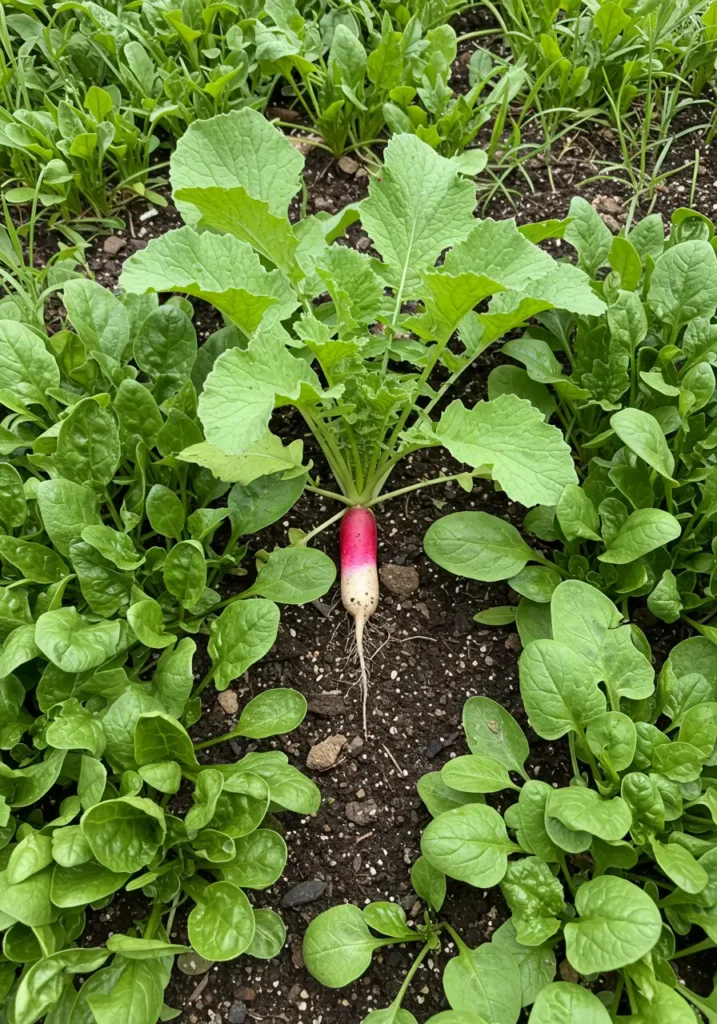
Radishes grow quickly and break up compacted soil, improving aeration for spinach roots. Spinach provides ground cover. This pairing maximizes space efficiency in small beds. They are harvested at different times, optimizing yield.
18. Sunflowers and Cucumbers: Support and Shade
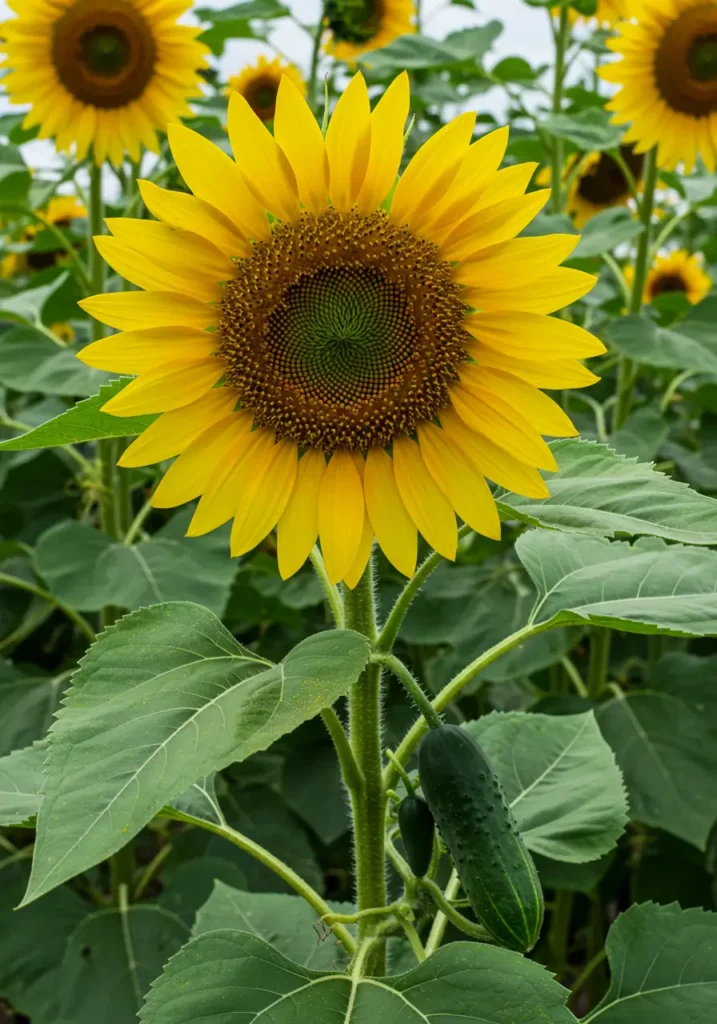
Sunflowers provide tall, sturdy stalks for vining cucumbers to climb. The large sunflower leaves offer some partial shade to cucumbers during the hottest parts of the day, helping to prevent scorching in intense summer sun.
19. Broccoli and Onions: Pest Repellent

The strong scent of onions helps repel common broccoli pests like cabbage worms and aphids. Planting them together creates a natural deterrent, reducing pest pressure on your broccoli plants.
20. Peppers and Okra: Complementary Growth
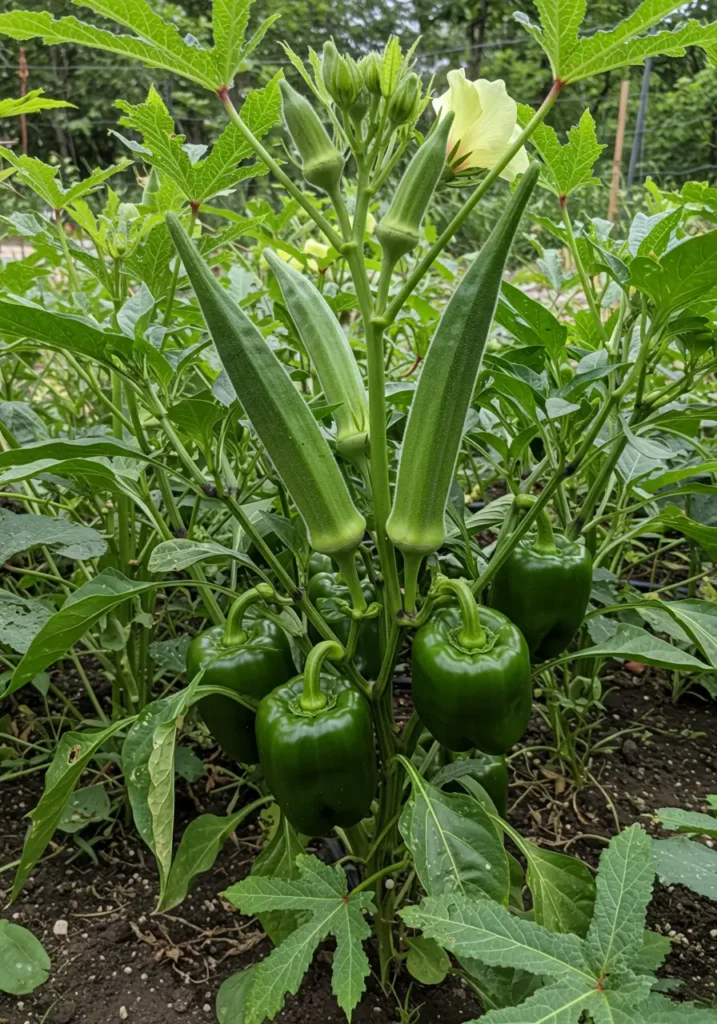
Peppers and okra both thrive in warm weather and benefit from similar growing conditions. Okra plants can provide some shade for pepper plants during the hottest part of the day, preventing sunscald on the peppers. This combination maximizes warm-season production.
21. Zucchini and Nasturtiums: Aphid Trap
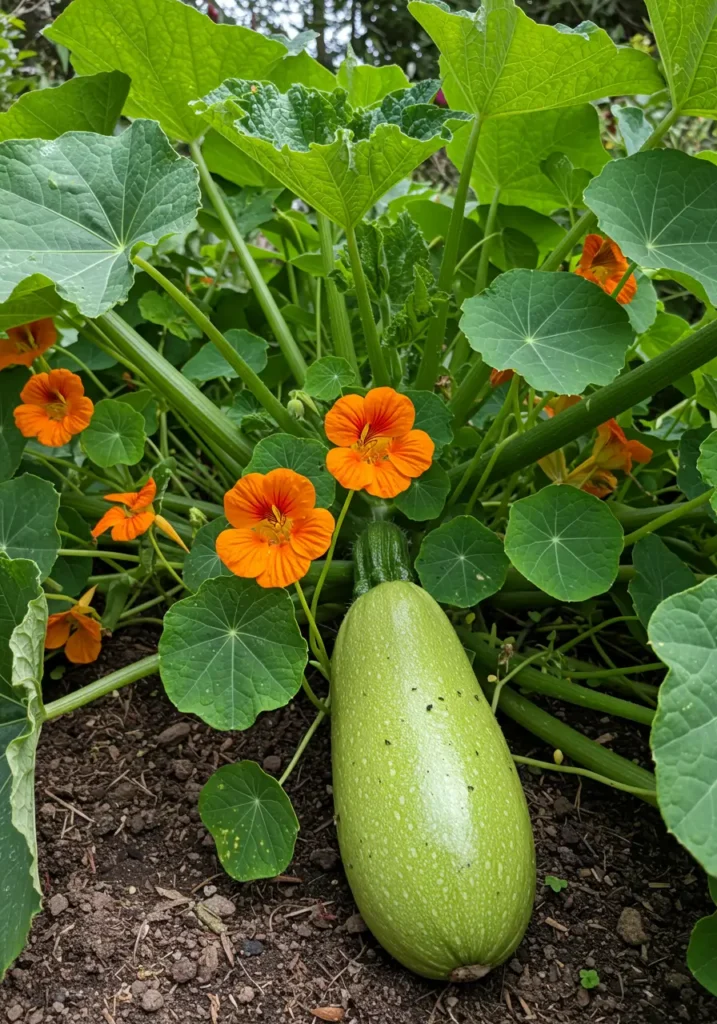
Nasturtiums are excellent trap crops for aphids. Plant them near zucchini. Aphids will gravitate towards the nasturtiums, sparing your zucchini plants from heavy infestations. You can then remove the infested nasturtiums.
22. Peas and Turnips: Soil Improvement

Peas, being legumes, fix nitrogen into the soil. This nitrogen benefits the growth of turnips, which are heavy nitrogen feeders. Turnips help loosen the soil as their roots grow, improving aeration for pea roots. This is a mutually beneficial soil-improving relationship.
23. Swiss Chard and Bush Beans: Root and Soil Benefits
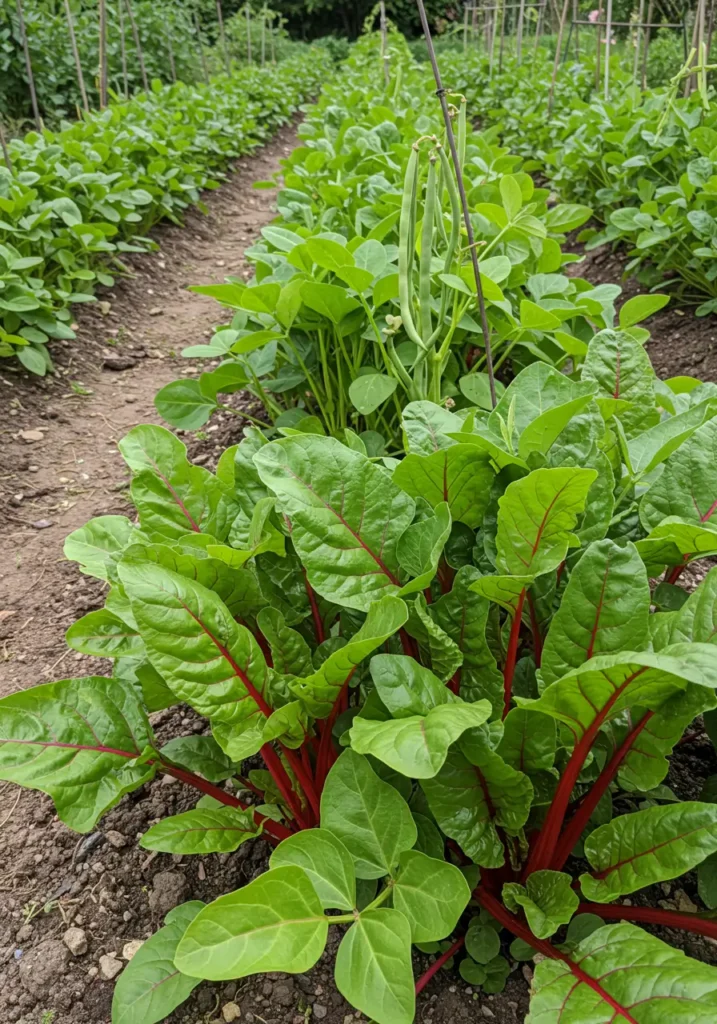
Bush beans, as legumes, improve soil nitrogen levels beneficial for Swiss chard. Swiss chard provides ground cover and can help retain soil moisture. This combination maximizes nutrient cycling in the garden bed.
24. Green Beans and Marigolds: Nematode Control

Plant marigolds (especially French marigolds) around green bean plants. Marigolds release compounds from their roots that repel nematodes, which can attack bean roots. This provides underground protection for a healthier bean crop.
25. Kale and Calendula: Attracting Pollinators and Deterring Pests

Calendula attracts beneficial insects like hoverflies and ladybugs, which prey on aphids and other pests that target kale. Calendula also adds a pop of color to the vegetable garden. This combination offers natural pest control and visual appeal.
Also Read: Transform Your Space: Creating Your Dream Home
Implementing Companion Planting Combinations in Your Garden
Integrating companion Planting Combinations into your garden design requires thoughtful planning. This ensures you maximize benefits and create a thriving ecosystem.
Plan Your Garden Layout
Before planting, sketch out your garden bed. Map where your primary crops will go. Then, identify suitable companion plants for each. Consider space requirements for both main crops and their companions. Plan for succession planting if using annual companions. This strategic layout ensures optimal plant interaction.
Observe and Adapt
Gardening is an ongoing experiment. Observe how your chosen Planting Combinations perform in your specific garden. Do pests still appear? Are certain plants thriving more than others? Use these observations to adapt your strategies for future seasons. What works well in one garden might need tweaking in another. Your garden is unique.
Ensure Good Spacing and Light
While companion planting encourages proximity, do not overcrowd plants. Ensure each plant receives adequate sunlight and air circulation. Overcrowding can lead to fungal diseases and reduced yields. Balance the benefits of companionship with individual plant needs for space and light.
Budgeting for Companion Planting: Smart Organic Solutions
Companion planting is often a cost-effective way to enhance garden health. Your budget primarily involves seeds, soil amendments, and any specific support structures.
Affordable Seeds and Basic Organic Amendments (Lower End)
Starting companion plants from seed is highly economical. A packet of seeds typically costs only a few dollars. Focus on growing companion plants that are easy from seed, like marigolds, dill, or nasturtiums. Utilize free organic amendments like homemade compost or leaf mold. This approach provides significant benefits for very little financial outlay. This makes Planting Combinations accessible to all gardeners.
Mid-Range Supplies (Mid-Tier)
A mid-range budget allows for purchasing some starter plants for companions that are harder from seed, or for buying larger quantities of seeds. You might also invest in bagged organic compost or worm castings to significantly amend your soil. Consider reusable support structures like metal trellises or sturdy netting. These provide long-term value for your garden.
Premium Organic Additives and Advanced Systems (Higher End)
A larger budget might allow for specialized organic fertilizers, advanced soil testing services, or more elaborate permanent support structures. Investing in specific beneficial insect releases (like ladybugs) also falls into this category. These premium options enhance garden health and productivity, but they are not strictly necessary for successful companion planting.
Caring for Your Companion Planted Garden
Maintaining a companion planted garden involves regular care that supports the synergistic relationships between your plants. Consistent attention ensures continued health and productivity.
Consistent Watering and Feeding
All plants, including companion plants, require consistent watering, especially during dry periods. Water deeply to encourage strong root growth. If you are growing heavy feeders, ensure you provide regular fertilization with organic nutrients. Healthy, well-fed plants are more resilient to pests and diseases, allowing their beneficial properties to shine in your Planting Combinations.
Monitor for Pests and Diseases
Even with companion planting, pests and diseases can sometimes occur. Regularly inspect your plants for any signs of trouble. Early detection allows for prompt, targeted intervention, ideally with organic methods. Remove any diseased leaves or heavily infested plants to prevent spread. A watchful eye ensures the overall health of your garden ecosystem.
Maintain Good Air Circulation and Pruning
Good air circulation helps prevent fungal diseases. Ensure plants are properly spaced. Prune dense foliage if necessary. For vining companions, guide them onto their supports to prevent sprawling. This practice maintains overall plant health and ensures all plants receive adequate sunlight, contributing to the success of your Planting Combinations.
Latest Innovations in Companion Planting and Organic Gardening
The field of organic gardening continually evolves, integrating new scientific understanding and technological advancements. These innovations enhance the effectiveness and accessibility of companion planting.
Advanced Soil Science and Microbiome Research
New research delves into the complex world of the soil microbiome. This involves understanding how beneficial microbes interact with plant roots and how certain plant exudates influence these interactions. This knowledge allows for more targeted companion planting strategies. It also informs the development of specialized soil amendments that enhance plant health and nutrient uptake, optimizing Planting Combinations.
Digital Planning Tools and Apps
Gardening apps and digital planning tools now incorporate companion planting guides. These tools help gardeners map out their beds, suggesting beneficial pairings and identifying incompatible plants. Some apps offer reminders for planting times, watering, and pest monitoring. This technology makes complex companion planting strategies more accessible and easier to implement for home gardeners.
Biodiversity-Focused Seed Mixes
Seed companies offer new “pollinator-friendly” or “beneficial insect attracting” seed mixes. These mixes contain a variety of flowers and herbs specifically chosen to invite helpful insects into the garden ecosystem. Integrating these into your garden provides natural pest control and enhances pollination for your vegetable crops. This simplifies the process of creating a balanced and thriving garden through smart Planting Combinations.
Making Your Final Decision on Planting Combinations
Embracing companion Planting Combinations is a rewarding step towards creating a healthier, more productive, and environmentally friendly garden. Your choices will enhance natural defenses and encourage vibrant growth.
Prioritize understanding the basic principles of pest deterrence, beneficial insect attraction, and soil improvement. Select pairings that align with your garden’s primary crops and challenges.
Consider starting small. Experiment with a few new Planting Combinations each season. Observe their effects and adapt your strategies based on what works best in your specific garden environment. Gardening is a continuous learning process.
Do not overlook the importance of healthy soil and consistent care. These fundamental practices underpin the success of any companion planting strategy.
Remember, companion Planting Combinations transform your garden into a resilient, interdependent ecosystem. When you work with nature, you unlock its full potential for beauty and abundance.
Cultivating Harmony: The Power of Strategic Planting Combinations
Harnessing the power of companion Planting Combinations offers an organic, effective way to enhance your garden’s health and productivity. This practice leverages natural synergies to deter pests, attract beneficials, and improve soil.
Take time to explore the diverse pairings available. Plan your garden layout strategically. Remember that a well-chosen planting combination creates a harmonious ecosystem that benefits all.
As you integrate these insights into your gardening, remain observant and adaptive. Your commitment to working with nature will yield bountiful and vibrant results.
By applying these principles, you transform your garden into a thriving, resilient space. You enjoy healthier plants, better harvests, and a deeper connection to the natural world around you.
Frequently Asked Questions About Planting Combinations
What is companion planting?
Companion planting involves strategically placing different plant species near each other to gain mutual benefits. These benefits include natural pest deterrence, attraction of beneficial insects, improved soil health, and enhanced growth or flavor of crops.
How do Planting Combinations deter pests?
Certain Planting Combinations deter pests by releasing compounds (from roots or foliage) that repel insects, or by acting as “trap crops” that draw pests away from more valuable plants. The strong scent of some herbs can also mask the scent of vulnerable crops.
Can I plant anything next to anything else in companion planting?
No. While many plants are beneficial companions, some are considered “bad neighbors” and can hinder growth or attract pests to each other. For example, corn and tomatoes are generally not recommended as companions. Always research specific Planting Combinations.
Do Planting Combinations really improve flavor?
Some gardeners report that certain Planting Combinations, such as tomatoes and basil, can improve the flavor of vegetables. While scientific evidence for flavor enhancement is sometimes limited, the overall improved plant health from beneficial interactions can contribute to better-tasting produce.
Is companion planting only for organic gardeners?
While companion planting is a core principle of organic gardening, anyone can utilize its benefits. It provides natural pest control and growth enhancement, reducing the need for chemical interventions, which aligns with both organic and conventional gardening practices.
